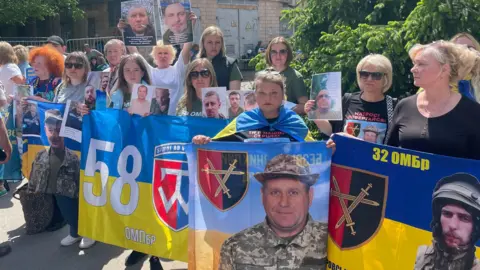On May 23, 2025, Ukraine and Russia executed a significant prisoner swap, marking the largest exchange of detainees since the onset of the full-scale Russian invasion in 2022. In this complex arrangement, both nations transferred a total of 390 individuals—comprised of 270 servicemen and 120 civilians—at the Ukrainian border with Belarus as part of a deal reached during direct talks in Istanbul just one week prior. This pivotal agreement not only highlights the ongoing humanitarian concerns tied to the conflict but also the potential for future negotiations as both sides acknowledged that additional exchanges would follow in the coming days.
While there have been numerous smaller-scale prisoner swaps throughout the ongoing conflict, this latest exchange stands out due to the notable involvement of civilians. The Russian Ministry of Defense stated that the exchanged individuals included servicemen along with civilians who had previously been captured by Ukrainian forces in Russia’s Kursk region. These individuals were currently located in Belarus and were expected to be transported back to Russia for essential medical evaluations and treatments.
Ukrainian President Volodymyr Zelensky celebrated the news of the exchange on social media, emphasizing that the government was actively working to verify the identities and details of the individuals being returned. The Ukrainian coordination center for prisoners of war disclosed that among the 270 military personnel released, they had served in various combat zones across the eastern and northern regions of Ukraine, including critical areas such as Kyiv, Chernihiv, Donbas, and Kharkiv. The exchange also included three women amongst the released detainees.
The news of the swap generated reactions from international figures, including former U.S. President Donald Trump, who took to his social media platform, Truth Social, to express his congratulations on the successful completion of the exchange. He suggested that this development might signal an opportunity for significant diplomatic breakthroughs in the long-standing conflict.
In northern Ukraine, families of soldiers held captive by Russia gathered, waiting anxiously for updates, hoping that their loved ones would be among those released. One mother, Natalia, anxiously awaited news of her son, Yelizar, who was captured during fighting in the city of Severodonetsk three years earlier. She expressed a mix of hope and uncertainty, not knowing exactly when he would return home.
The groundwork for this deal was laid when low-level delegations from Ukraine and Russia convened in Turkey for the first time since March 2022. Although the meeting lasted only two hours and made little progress toward a ceasefire, it ultimately facilitated this crucial prisoner exchange, which is seen as a step forward in a protracted conflict characterized by significant human cost.
Further discussions regarding future negotiations are anticipated, with Russian Foreign Minister Sergei Lavrov indicating a follow-up meeting where Moscow would present a “memorandum” to the Ukrainian delegation. Lavrov’s remarks included comments on the legitimacy of Ukrainian leadership, casting doubt on President Zelensky’s role, an assertion Zelensky has repeatedly refuted as an unfounded and inappropriate challenge to Ukraine’s sovereignty.
The landscape of potential peace negotiations has been complicated as Italy’s Prime Minister Giorgia Meloni expressed support for Trump’s proposition to have the Vatican mediate discussions. However, with Lavrov deeming this option unrealistic, the chances of rapid diplomatic progress remain uncertain.
In conclusion, while this significant prisoner swap has provided a glimmer of hope for the families involved and highlighted the human aspect of this protracted conflict, it also underscores the ongoing tensions and complexities that continue to obstruct a comprehensive resolution to the war between Ukraine and Russia. As both nations gear up for further exchanges, the international community watches closely, awaiting any developments that might lead to a much-needed ceasefire and a path toward lasting peace.



